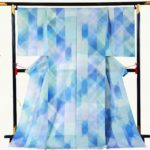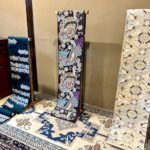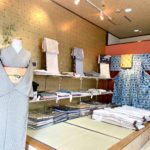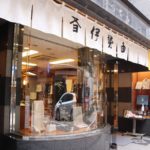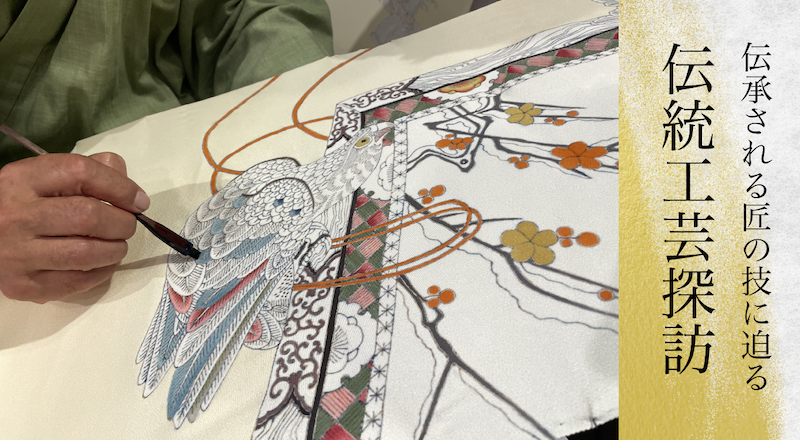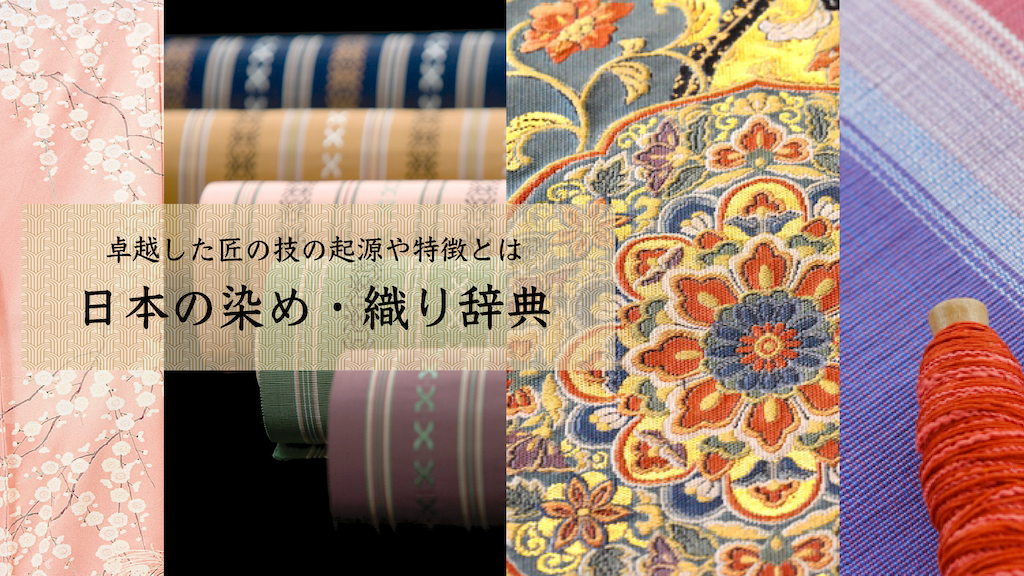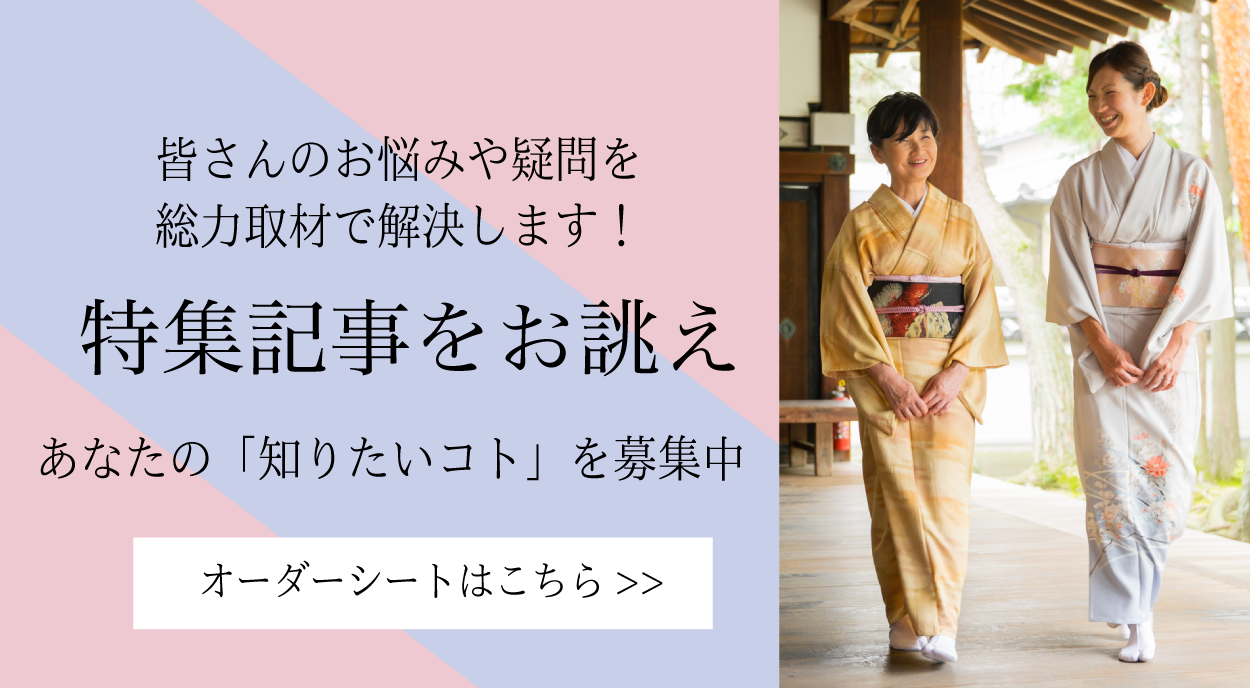博多織
Pronunciation: Hakata-ori
Production Area: Fukuoka City, Fukuoka Prefecture
Hakata-ori is a textile with a history of more than 770 years, produced mainly in Hakata, Fukuoka City. Characterized by the use of many fine warp threads and thick weft threads that are tightly beaten with a reed, the patterns are mostly created by raising the warp threads. This results in a fabric that is firm, easy to tighten, and resistant to loosening, making it especially suitable for Obi. The technique is said to have originated from weaving methods brought back from the Song dynasty in China by merchants from Hakata. During the Edo period, Kuroda Nagamasa, the first lord of the Chikuzen Fukuoka domain, selected Hakata-ori as an official tribute to the Tokugawa shogunate. The famous “dokko and hana-sara” patterns became known as Kenshō Hakata (tribute Hakata) and “kenshō-gara” (tribute designs).
The most crucial stage in the production of Hakata-ori is called shikake (setup), which involves preparing the loom by threading warp yarns in a prescribed order. For some Obi, more than 15,000 warp threads are passed individually through holes smaller than 1 mm. Hakata-ori includes many weaving variations such as hiraji (plain ground), kandō (striped), honbukuro (double-weave), and rosha (a gauzy summer weave). In 1976, Hakata-ori was designated as a Traditional Craft by the Ministry of Economy, Trade and Industry.
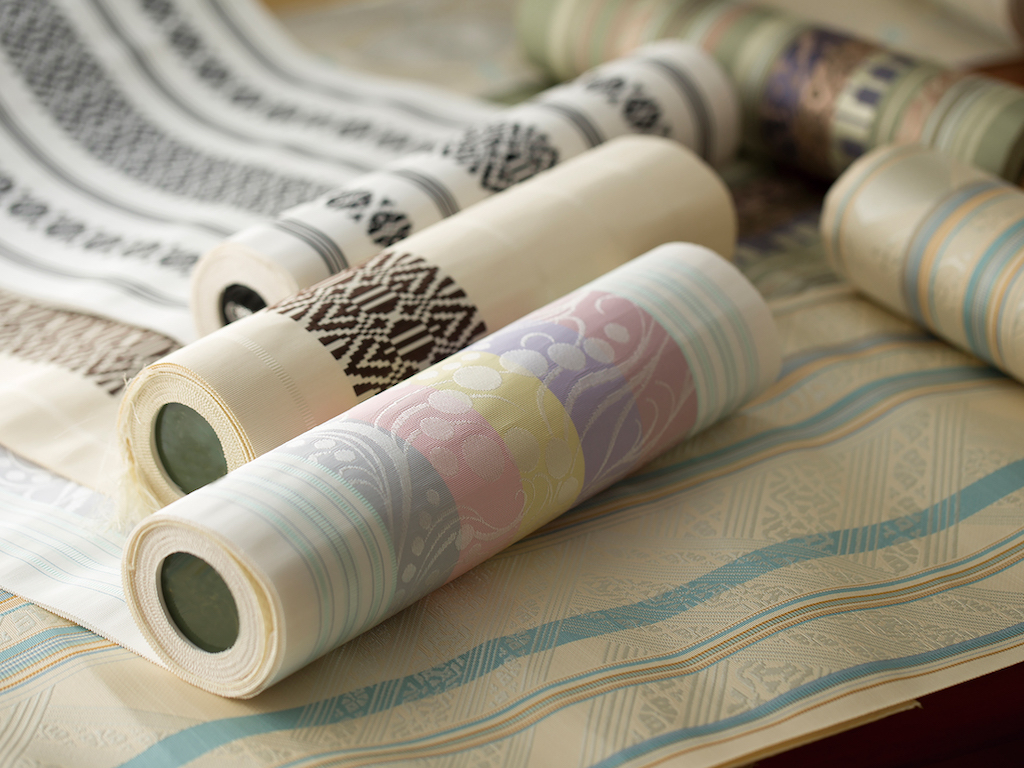
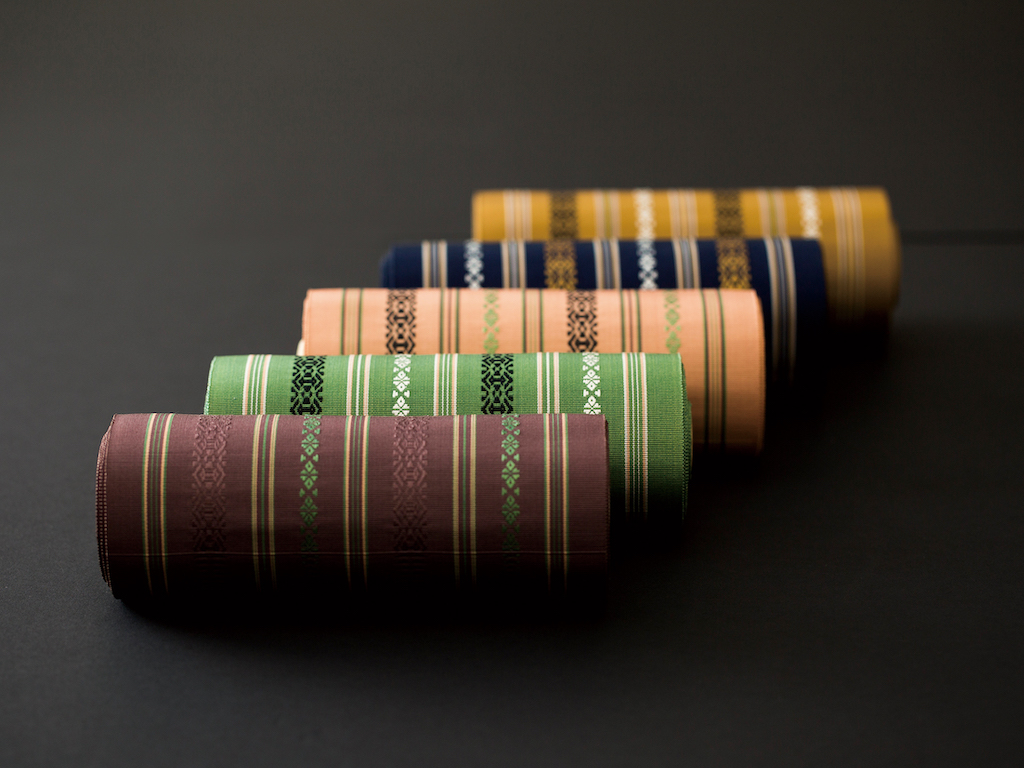
Photo courtesy of Fukuoka Prefecture Commerce and Industry Department Tourism Bureau Tourism Policy Division

